5. Hand Drums
Bongos are the most well-known hand drums. They are of Afro-Cuban origin and are always used in pairs, with a slightly conical shape. The shell was traditionally made of wood, but can also be made from fibreglass or other synthetic materials - even metal.
Bongos are played with the flat of the hand and the fingertips. Special playing techniques can create a remarkable variety of sounds from these two simple drums. Owing to the popularity of Latin American dance music they became ubiquitous in dance orchestras several decades ago. Their sound and rhythm is prominently featured in cha cha music and gives salsa much of its momentum.
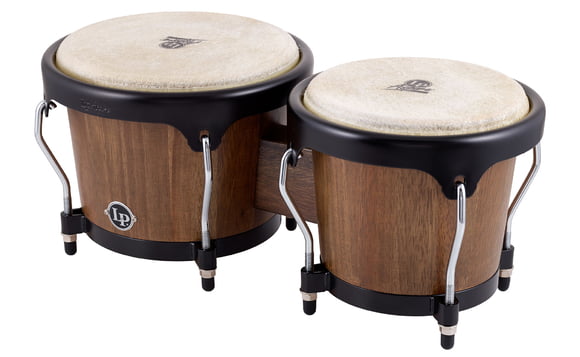
Bongos
The djembe (pronounced jem-bay) originated in West Africa and is the most popular drum from the continent. The goblet-shaped drum shell is covered with shaved goatskin and is played with both hands. The goblet shape helps this drum create very low bass tones, open tones also high, cutting notes (near the edge). This allows the djembe to be used as a solo instrument as well as having a supporting role in an ensemble.
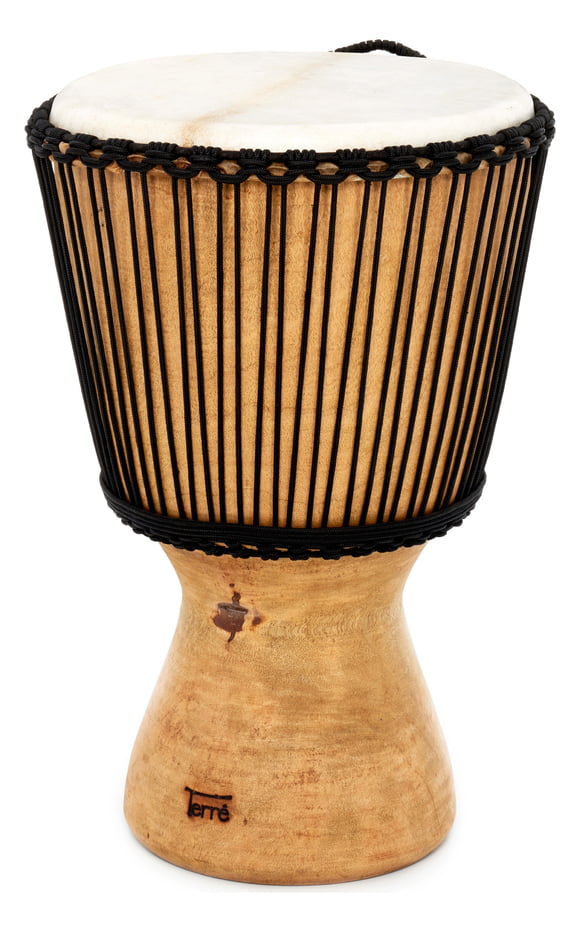
A djembe
The Tabla is an asymmetrical pair of small drums, producing contrasting tones, originating from India. The drums have a slightly conical and cylindrical form that is covered with an animal skin. The smaller drum, used to play the higher notes, is called the dayan and is made from hollowed out teak or rosewood. The larger drum, the bayan, produces a much deeper tone and is usually made from a metal such as brass. The drumheads are usually made from goatskin, with an outer ring of skin layered to mute excess overtones. There is a black ring in the centre of each head, created from a paste of rice and iron powder The drums are played with the fingers and palms using tapping, striking and pressure techniques to create the myriad of tones the virtuoso tabla drummer summons while performing classical Indian music.
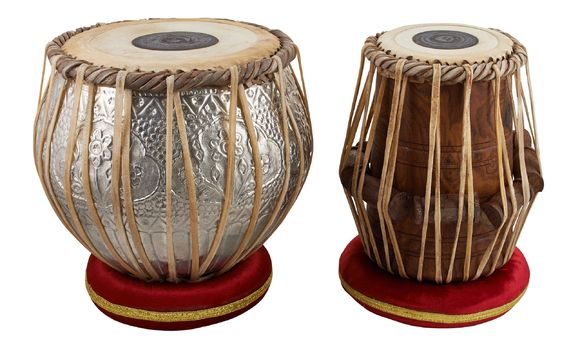
Tabla drums
The darbouka is another goblet-shaped drum of Arabic origin from the Islamic regions of Asia, the Middle East and North Africa, made of either wood or metal. The player holds and plays the drum under the left arm when standing or between the thighs when sitting. The darbouka has a rich tradition of in folk ensembles and the road music of travellers and is known by a variety of names in different cultures including dumbek, which helps one imagine two of this drums characteristic sounds.
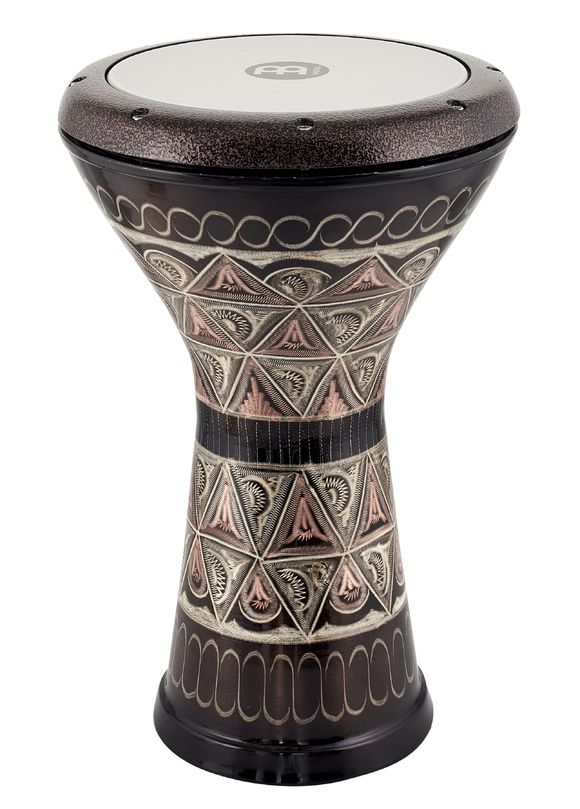
A dumbek
Talking drums originate from Africa and use a system of cords to connect the drumheads. The drum is held under one arm while pressure is applied to the cords, varying the drums pitch, creating the illusion of speech these curious drums are named for. Sometimes pebbles are put in the drum to add a rattling sound. Talking drums vary in size depending on use and are usually played using a curved stick with a flattened tip.
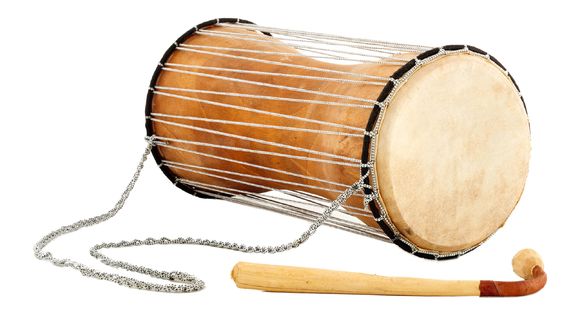
Talking drums






